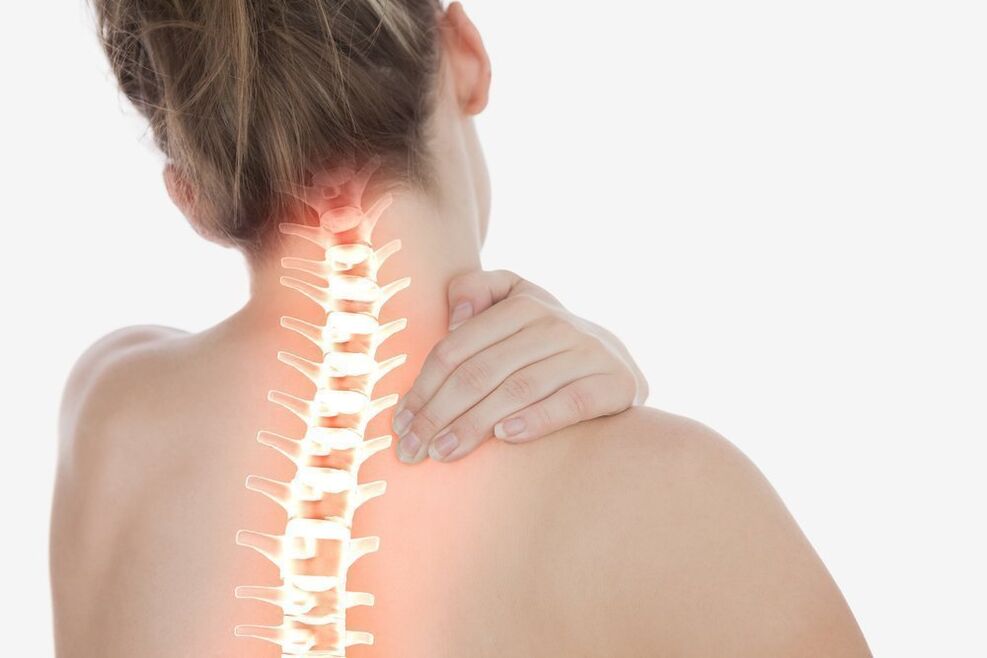The defeat of the joints or cartilage of the spine in the neck region can significantly complicate life. When osteochondrosis of the cervical spine occurs, many exercises become inaccessible, since intense physical activity can lead to complications. However, do not panic prematurely, because osteochondrosis is not a sentence, and there are a number of exercises available at home that will facilitate the relief of symptoms, or even cope with the disease completely.
Selection of physical exercises.

With cervical osteochondrosis, the muscles need to be strengthened, which will partially relieve the spine and improve blood circulation. With the help of a set of exercises compiled by professionals, the regular implementation of which has a beneficial effect on the cervical muscles, you can significantly alleviate the symptoms of the disease.
The first step in preparing to exercise at home, in case of health problems, should be a visit to the doctor. He will conduct an examination, after which he will be able to suggest which physical activities are contraindicated for you and which can alleviate the course of the disease or even help cope with it.
You should not delay contact with a medical facility, as it is much easier to get rid of the disease at an early stage. And you should not choose physical exercises without contacting a specialist, because in the case of osteochondrosis, self-treatment with the help of fitness can not only not bring relief, but also, on the contrary, aggravate the situation.
At the same time, your doctor can offer you a full range of physical exercises indicated for neck problems and show you how to do them correctly for the best results. It is worth noting that, despite the apparent simplicity, all elements of the proposed exercise therapy contribute to the improvement of well-being.
Exercises at home: rules and objectives of training.

Exercises performed correctly and regularly at home contribute to a significant improvement in well-being. First of all, this is due to increased blood flow and acceleration of metabolism. And the muscles of the spine that are constantly in good shape will not allow osteochondrosis to develop further. As a result, the pain will go away, and if you don't stop exercising, then forever.
To speed up the obtaining of a positive result, pay attention to the following recommendations:
- Only regular exercise will help to get rid of health problems. And sedentary work is reason to pay twice the attention.
- It is recommended to stretch the muscles of the back and neck 8 to 10 times during the day. It can be a self-massage or just walking.
- Control your posture, do not stoop, try to keep your back straight throughout the day and keep your head aligned with it. This will allow you to evenly distribute the load throughout your body, maintain good health, and quite possibly avoid the need for regular therapeutic exercises.
- Try to avoid sleeping on your stomach; This will prevent swelling of the cervical spine muscles and significantly improve your morning well-being.
- Water helps maintain muscle tone throughout the body, so do not neglect its daily intake. Dehydration will only exacerbate the situation with this disease.
When exercising at home, exercise gently, without jerking and changing range of motion. Conduct classes in an area where nothing will interfere with your movements. Training clothing should also provide complete freedom of exercise. Try to diversify your usual exercises, but do not overload your muscles.
And most importantly: if during exercise or gymnastics your health worsened, stop exercising immediately and consult a doctor as soon as possible. Any recommendation of a specialist must be carried out implicitly and in its entirety.
The best fitness exercises for cervical osteochondrosis.

If your blood pressure is high, your spine is injured, or you have been diagnosed with cancer, then it is best not to risk your health and not do the exercises listed below.
Starting position: feet shoulder-width apart, hands on the waist, straight back, shoulders spread.
- Turn your head without tilting it, first one way and then the other.
- Tilt your head to the right, trying to touch your ear with your shoulder, then return to the starting position and repeat the tilt to the other side.
- Tilt your head forward. Having touched the chest with your chin, turn it a little, first in one direction, then the other and return to its original position.
- Do alternating torso bends to the right, forward, and left.
- Put your hands on your shoulders and rotate your arms first forward and then in the opposite direction.
Each of the fitness exercises must be repeated at least ten times. It is advisable to do the first exercise in the morning, upon waking, and then it is recommended to repeat it several times throughout the day.
There are also several easy ways to restore blood circulation to the neck area without interrupting the work process. You must repeat these exercises twice with each hand.
- Keeping your back straight, rest the palm of your hand on your forehead and, tensing your neck muscles, press on it.
- Place the palm of your hand at the back of your head and press down with your head, trying to engage your neck muscles.
- Place the palm of your hand on your neck and, lifting your chin slightly, press lightly on the muscles with your fingers. Then release the pressure, turn your head slightly to the side, and push again.
Regularly performing the proposed complexes of exercise therapy, in a few weeks you will achieve the following results:
- the annoying headache will disappear;
- brain activity will increase;
- the pressure will return to normal;
- the feeling of stiffness in the cervical spine will disappear.
And all this thanks to an increase in muscle tone and an improvement in blood circulation as a result of the systematic tension and stretching of the neck muscles. The main thing is not to stop paying attention to exercise after the symptoms of the disease disappear.




























